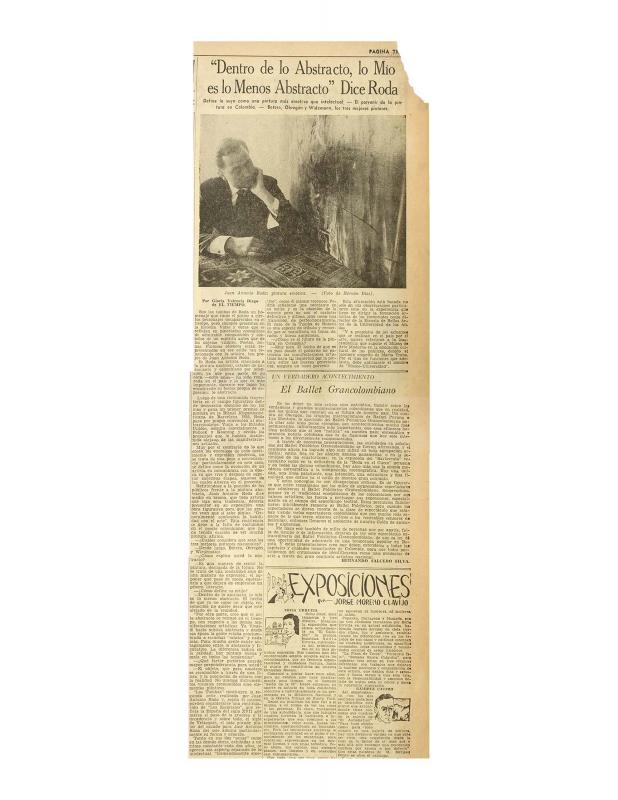This manuscript by the Austrian critic Walter Engel (1908–2005) introduces the first exhibition in Colombia by the Valencian painter Juan Antonio Roda (1921–2003), who was later nationalized as a Colombian citizen in 1970. The document exalts the figurative Expressionism of the early works rendered by the Spanish artist, who would eventually move toward abstract art (See “‘Dentro de lo abstracto, lo mío es lo menos abstracto’, dice Roda” [doc. no. 1092563]). The portrait is the genre that encompassed the work he would do in the future, especially when he made the transition from figurative to abstract art.
When Roda arrived in Colombia in 1955, he was already considered a portrait painter, since he had an academic background and had had exhibitions in Spain and in France. In Barcelona, he had studied painting at the Escuela Massana (1941–43), and in Paris, at a private academy (1951) with a scholarship granted by the French government. In the French capital, he set a priority for the need to take his paintings beyond the parameters of the academy; this was why he did not stay very long at the academy where he was studying. When Engel mentioned “significant successes in his own country and in France,” he must have been referring to the recognition Roda had obtained at events such as the Salón de Artistas Jóvenes de Barcelona (1945), as well as the II Salón de Octubre (1949) and the Salón de Artistas Españoles Residentes en París (1954).
On the date of the exhibition at the Sociedad Colombiana de Arquitectos, Roda had already painted the mural with religious themes in the vault of the apse at Our Lady of the Sacred Heart of Bogotá Church (See “Roda en Nuestra Señora del Sagrado Corazón” [doc. no. 1080140]), one of the first works he executed in Colombia.
The art historian and critic Walter Engel emigrated from Austria to Colombia after Austria was annexed by Hitler in the 1938 Anschluss. He was an art critic who systematically published all his work in specialized journals as well as the mass media in Colombia. He contributed to journalistic media such as the Revista de las Indias (1941–51), the literary supplement of the newspaper El Tiempo (1944–57), the Sunday magazine of the newspaper El Espectador (1959–65), and other publications such as Revista de América, Proa, Sábado, Vida, Panorama, Cromos, Índice Cultural, and Boletín Cultural y Bibliográfico del Banco de la República de Colombia. Along with the Colombian artist Judith Márquez, he founded the journal Plástica, and he worked with her there from 1956 to 1960.


